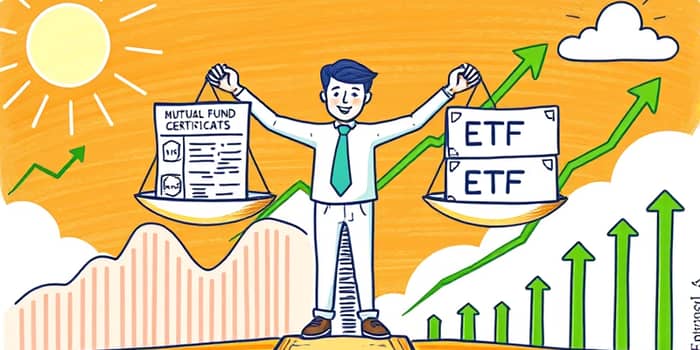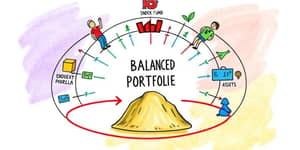
Investing wisely means balancing costs, flexibility, and long-term growth. Combining mutual funds and ETFs can deliver the best of both worlds.
Mutual funds and ETFs both pool assets to invest in diversified baskets of securities. While their goals align—increasing exposure and reducing individual security risk—their structures and trading mechanics differ significantly.
Mutual funds operate on a net asset value (NAV) basis, with purchases and redemptions processed only at the end of trading days. ETFs trade intraday on exchanges like stocks, offering real-time pricing, higher liquidity for active traders, and the ability to adjust positions swiftly.
Cost management is critical. Even small differences in fees can compound into sizable impacts on long-term returns.
An illustrative case: a $10,000 investment earning 5% annually over 20 years grows to about $19,612 with a 1.5% expense ratio, but to $24,002 with only a 0.5% expense ratio—a staggering 23% difference in growth.
Total Cost of Ownership (TCO) goes beyond expense ratios. It includes bid-ask spreads, commission fees, premium or discount to NAV for ETFs, and hidden mutual fund charges like account fees or redemption fees.
Investors should calculate TCO as follows:
Understanding every cost component clearly ensures that choices reflect true long-term expenses, rather than only the visible percentage numbers.
Investors choose between actively managed mutual funds and passively managed index funds or ETFs. Each approach has pros and cons:
Actively managed mutual funds aim to outperform benchmarks through professional analysis and security selection, but often carry higher expenses and turnover. Passive strategies track indices, giving broad market exposure at minimal cost. ETFs generally dominate this space by offering tax-efficient, low-expense index tracking.
Tax efficiency is a pivotal advantage of ETFs. Their in-kind creation and redemption mechanisms allow large transactions without triggering capital gains distributions to shareholders. Mutual funds, by contrast, must distribute gains when managers buy or sell securities, which can lead to unexpected tax bills.
Long-term investors should consider minimizing capital gains tax events by using ETFs in taxable accounts and reserving mutual funds for tax-advantaged retirement vehicles or automatic investment plans.
No single vehicle suits every goal. Combining mutual funds and ETFs tailors portfolios to match cost, convenience, and strategic needs.
Individuals differ in trading frequency, desired automation, and service needs. Consider these points:
Matching vehicle characteristics to personal habits can enhance returns and reduce friction.
The industry is shifting as investors flock to lower-cost options. Indexed equity ETFs attracted more than twice the cash flows of indexed equity mutual funds over the last decade. Fund companies are responding: average mutual fund expense ratios have fallen to 0.40% in 2024, pressured by competition from ETFs, which now average 0.14%.
This trend underscores the growing importance of cost considerations and the rising demand for transparent, flexible investment solutions.
The SEC mandates clear disclosure of all fees, expense ratios, and potential conflicts of interest in fund prospectuses. The 2019 ETF Rule standardized ETF operations, streamlining creation/redemption procedures and enhancing market oversight.
Investors should verify that funds comply with these regulations, ensuring transparent fee reporting and robust safeguards for their capital.
By thoughtfully combining mutual funds and ETFs, investors can harness professional management, automated investing, and low-cost, tax-efficient exposure. This balanced approach allows customization to individual goals, trading styles, and tax situations.
Ultimately, cost efficiency is not about choosing one vehicle over another but orchestrating both in harmony. With careful analysis of fees, TCO, and personal objectives, you can build a portfolio that maximizes returns while minimizing expenses and tax burdens.
References













